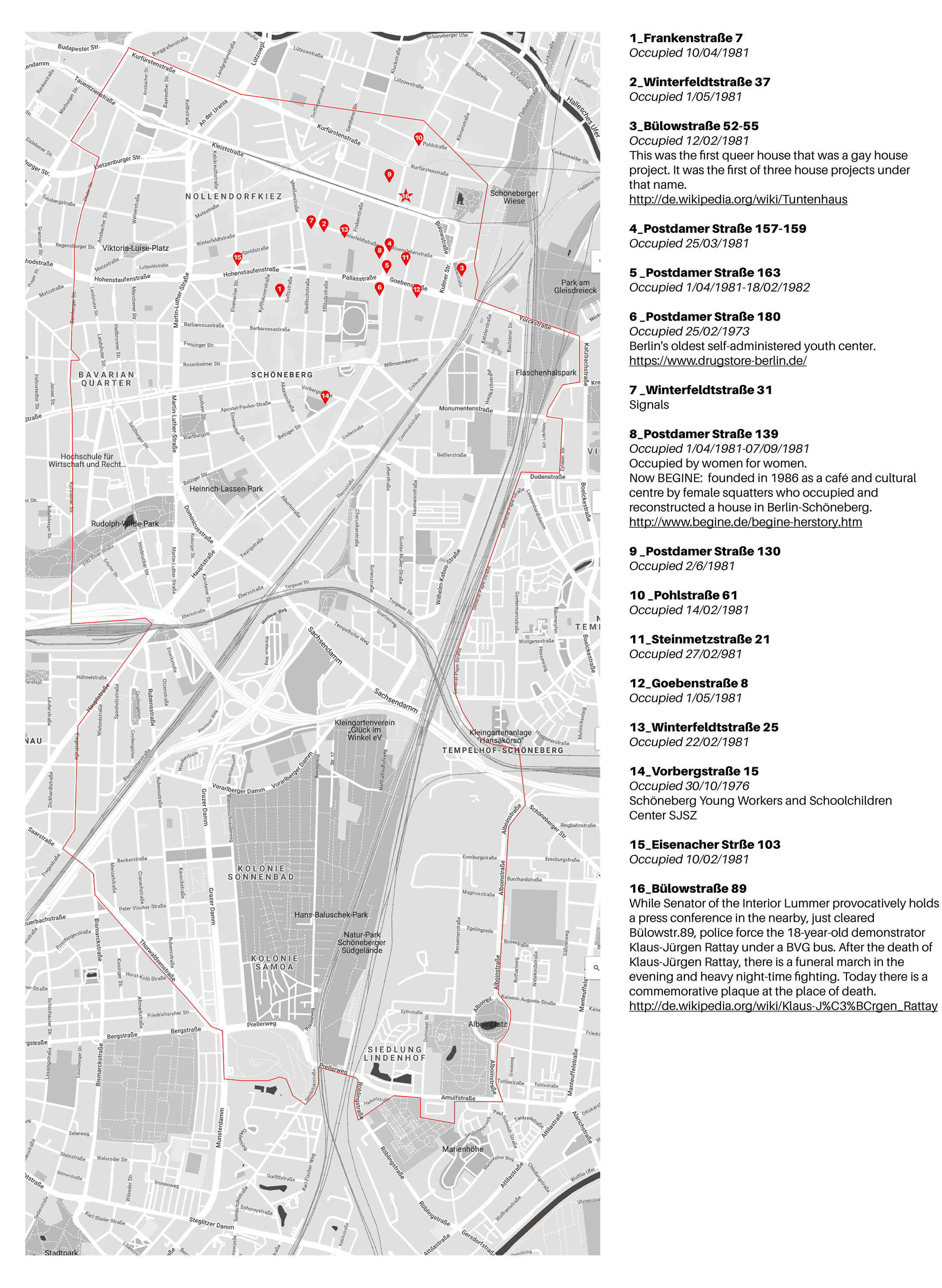Conflicts - Emma
Squatted houses was a social phenomenon that affected the entire German capital, albeit in different ways. First West Berlin (80's) and then East Berlin (90's). In both contexts they were strong attempts to experiment with community lifestyles. Restrained by alternative schemes to the dominant capitalist logics and aimed at finding new sources of sustenance.
Within these protest and occupation movements the most diverse political and social groups and subcultures (punk, autonomous, environmentalist, gay) were represented. Although different, they all had in common a new way of imagining life together. They thought about new forms of sharing living and public space. New social projects and alternative economies to the capitalist one.
The conservative party CDU, supported in the Senate by the socialist party SPD, declared zero tolerance towards squats. It began a campaign of repression against demonstrations and occupied houses. The Hausbesetzer were divided into two categories, those open to negotiation and criminals. The wave of repression caused violent clashes with the police, reaching its peak on 22 September 1981. On that day Klaus-Jurgen Rattay, who had just come of age, was killed in a clash. From that moment on, the initiatives of the movements began to diminish. Alongside the occupations that began to prefer legal and peaceful ways, however, the rebel ones continued to exist. They did not negotiate and ended with police evictions. In 1984, 105 houses were legalised with rental contracts and 60 were evicted.


